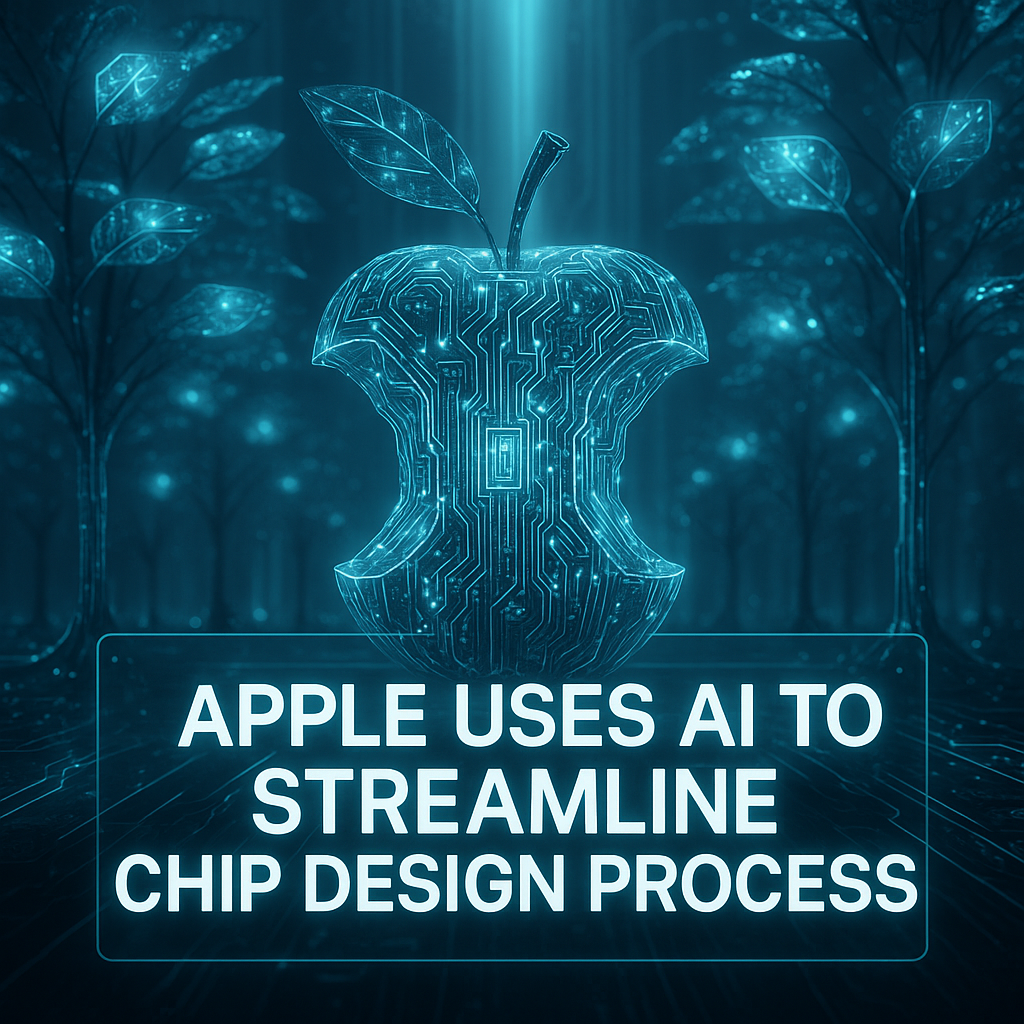
Apple hints at AI integration in chip design process
# Apple’s Bold Step Forward: Leveraging Generative AI in Chip Design
In an era where technology advances at a breathtaking pace, giants like Apple are constantly innovating to maintain their competitive edge. A recent revelation by Johny Srouji, Apple’s hardware chief, indicates that the company is venturing into the use of generative artificial intelligence (AI) to bolster its chip design process. This innovation is more than just an upgrade in process; it represents a fundamental shift in how technology companies could operate in the future.
## Why Generative AI in Chip Design Matters
“Generative AI techniques have a high potential in getting more design work in less time, and it can be a huge productivity boost,” said Srouji during his speech in Belgium.
The approach offers Apple a pathway to save valuable time and reduce the daunting complexity involved in designing increasingly advanced chips. As chips become more sophisticated, the design process necessitates tight coordination between hardware and software – an arena where AI can make a significant impact.
### A Strategic Collaboration
Apple is not venturing alone on this journey. In late 2024, they quietly commenced a project with Broadcom to develop an AI server chip, known internally as “Baltra.” This chip is integral to Apple’s strategy to expand its AI capabilities on the back end, complementing its suite of AI tools for iPhones, iPads, and Macs.
Baltra aims to power Apple’s private cloud infrastructure, tackling the heavier AI workloads that surpass the capabilities of on-device chips. This move underlines Apple’s commitment to maintaining control over performance, security, and integration.
### Balancing Privacy and Power
Apple prides itself on protecting user privacy, which is a major component of its AI strategy. The integration of AI tools presents a robust framework called “Private Cloud Compute,” where some AI functionalities run directly on the device while others are processed via server-based chips like Baltra.
Apple has structured the system to ensure anonymity and negate the need for users to log in. It’s a thoughtful balance between harnessing powerful AI features and ensuring uncompromised user privacy.
## Beyond Hardware: A Bold New Approach
Reflecting on Apple’s evolution, Srouji emphasized the company’s willingness to take significant risks, as exemplified by the Mac’s transition from Intel processors to Apple Silicon in 2020. That transition was a massive leap of faith for Apple, not merely a hardware shift but a monumental software endeavor, underscoring the company’s ability to commit entirely to its vision without a fallback option.
This same principle applies to their new AI-driven strategy in chip design. Apple is all in, relying on AI tools to compress design timelines and enhance precision in their chip-making process.
### Dependence on EDA Tools
Even as Apple takes these leaps in design methodology, it relies heavily on third-party software from electronic design automation (EDA) companies. Massive players like Cadence and Synopsys are enhancing their offerings, embedding AI features to meet the needs of tech companies seeking efficient and cost-effective chip design solutions.
#### The Rise of AI Tools:
– **Cadence**: Expanding its AI endeavors to meet the design needs of the future.
– **Synopsys**: Introducing AgentEngineer—AI agents to assist designers in automating repetitive tasks and managing complex processes, thus allowing engineers to focus on critical decisions.
These evolving tools promise to hasten Apple’s chip development journey, though it will require talent acquisition—engineers who are savvy with AI tools and machine learning.
## Learning from Apple’s Approach
While the technical intricacies of chip design might seem esoteric to the average consumer, Apple’s strategy imparts a valuable lesson. Innovating fearlessly and integrating new technologies, even when it involves complexity, can yield significant advantages.
Their approach speaks volumes about the importance of owning the entire technological stack—from hardware and software to the infrastructure facilitating AI functions. It’s about creating a seamless ecosystem where every component, from the ground up, works harmoniously.
### Key Takeaways
– **AI as a Lever**: Harnessing AI is not just about cutting-edge features; it’s a powerful productivity tool.
– **Control and Privacy**: Own your infrastructure; this gets you control over performance and privacy.
– **All-In Mentality**: Embrace risk and commit fully to innovative changes, with no safety nets.
– **Strategic Partnerships**: Collaborate with specialized partners to leverage external expertise.
## What Lies Ahead for Apple and AI?
Apple’s venture into generative AI for chip design signals a promising future, both in technology application and user experience. As consumers and observers of technological progress, it poses intriguing questions: How will Apple integrate these AI-designed chips into its next line of products? What new AI-driven features will pervade our devices in the near future, redefining the way we interact with technology?
These questions invite us to ponder, to anticipate, and to engage with the unfolding advancements. How will technology like this transform not only the objects in our pockets but the ecosystem of global innovation? As we wait for these revolutionary changes, reflecting on Apple’s fearless pursuit of progress encourages all to embrace change and innovation in their own endeavors.

